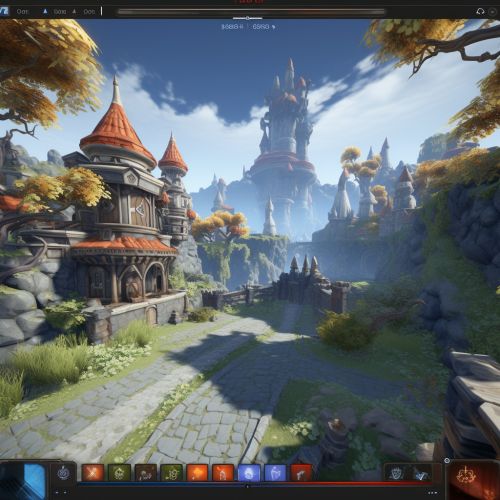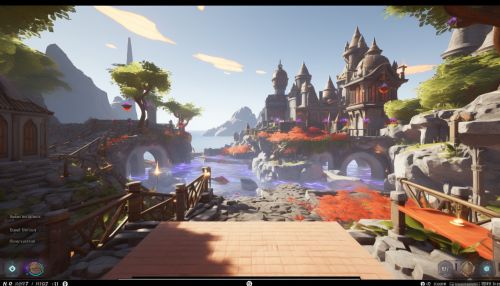Game engine
Introduction
A game engine, also known as a game architecture, game framework or gameframe, is a software-development environment designed for people to build video games. Developers use game engines to construct games for consoles, mobile devices, and personal computers. The core functionality typically provided by a game engine includes a rendering engine ("renderer") for 2D or 3D graphics, a physics engine or collision detection (and collision response), sound, scripting, animation, artificial intelligence, networking, streaming, memory management, threading, localization support, scene graph, and may include video support for cinematics.


History
The first game engines were developed in the mid-1980s. Contrary to the contemporary custom of using middleware and third-party game engines, it was then a common practice to develop the engine, game logic, and rendering code for a game all in-house (often referred to as 'in-house engine') and often for a single game.
Architecture
The architecture of a game engine is dictated by the constraints of the game and the visual and interactive complexity expected within the game. Modern game or graphics engines generally consist of several components or sub-engines, each responsible for a specific aspect of the game's functionality.
Rendering engine
The rendering engine generates animated 3D graphics by any of a number of methods (rasterization, ray-tracing, etc.). In addition to 3D, the engine may also be capable of rendering 2D graphics. Lower-level libraries such as DirectX, Simple DirectMedia Layer (SDL), and OpenGL are also commonly used in games as they provide hardware-independent access to other computer hardware such as input devices (mouse, keyboard, and joystick), network cards, and sound cards.
Physics engine
A physics engine is software that provides an approximate simulation of certain physical systems, such as rigid body dynamics (including collision detection), soft body dynamics, and fluid dynamics, of use in the domains of computer graphics, video games and film.
Sound engine
The sound engine is the component of the game engine that manages the loading, buffering, mixing and output of sound and music files. It can be supplemented with a variety of sound processing software libraries that provide advanced audio capabilities.
Scripting
Most game engine suites provide a scripting language to enable developers to automate actions within their game. The language provided can range from a language proprietary to the engine, to industry-standard languages such as Python or Lua.
Game engine components
A game engine includes inherent components. While each game engine is different, there are common components that are essential for a game engine.
Input
Input from a player is crucial in the development of a game. This component is responsible for determining the actions of the player and translating them into actions in the game.
Game world representation
This component is responsible for the physical and logical representation of the game world. It manages the objects in the world and their properties.
Rendering
This component is responsible for drawing the game on the screen. It interfaces with the graphics hardware to render the game world and the objects within it.
Animation
This component is responsible for managing the movement and animation of objects within the game world.
Artificial Intelligence
The AI component is responsible for controlling the logic and behavior of all non-player characters (NPCs) in the game.
Game engine development
Game engine development is not a simple task. In fact, it is one of the most challenging types of software development. A game engine must be robust, stable, flexible, and provide a rich set of features to make game development easier and more efficient.
See Also
Game development Video game production Computer graphics 3D computer graphics Game programming
